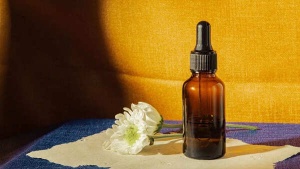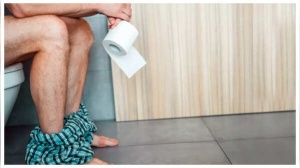Have you ever experienced the unsettling rush of anxiety before a crucial event, or felt an inexplicable wave of dread wash over you? Anxiety and panic attacks are increasingly prevalent, manifesting as a rapid heartbeat, sweaty palms, dizziness, and an overwhelming sense of impending doom. While not life-threatening, these attacks can significantly diminish your quality of life, making travel or social outings feel impossible. Fortunately, there are techniques to alleviate these symptoms, including stimulating your vagus nerve.
Let's explore how this works.
The vagus nerve plays a vital role in the body's relaxation response, influencing heart rate, digestion, and stress management. A simple method to activate this nerve involves applying ice to specific areas, such as the underarms.

The vagus nerve, one of the longest nerves in the body, extends from the brainstem to the chest and abdomen. As a primary component of the parasympathetic nervous system, often called the "rest and digest" system, it helps calm the body after stressful events by slowing the heart rate and promoting relaxation.
Activating the vagus nerve can alleviate stress, elevate mood, and improve sleep. This has led many individuals to seek natural methods for stimulating this nerve.
Experts explain that exposing the body to cold temperatures triggers the diving response, thus activating the vagus nerve. Splashing cold water on the face, for instance, stimulates nerves connected to the vagus nerve, which subsequently slows the heart rate and relaxes the body.
Scientific studies support this, demonstrating that cold stimuli on the face can increase vagal activity and reduce stress responses. The Cold Face Test, which involves applying a cold stimulus to the face, effectively demonstrates the calming impact on the nervous system.

While the face is a common area for cold stimulation, applying ice to the underarms is an emerging, effective alternative. The underarms are in close proximity to major blood vessels and nerves, including those connected to the vagus nerve pathways.
Applying cold to the underarms stimulates the parasympathetic nervous system, indirectly activating the vagus nerve. This results in a decreased heart rate and a state of calm. Experts recommend this method as simple, non-invasive, and easily performed at home.
Newer articles
Older articles
 India Enters New Space Age as Astronaut Shukla Joins ISS Mission
India Enters New Space Age as Astronaut Shukla Joins ISS Mission
 X Cracks Down: Half a Million Indian Accounts Suspended for Policy Breaches
X Cracks Down: Half a Million Indian Accounts Suspended for Policy Breaches
 Google Unveils Strategy to Combat Misinformation, Boost Voter Access in India's 2024 Elections
Google Unveils Strategy to Combat Misinformation, Boost Voter Access in India's 2024 Elections
 Hair Oil vs. Hair Serum: Which is the Right Choice for Your Hair?
Alternatively:
Unlock Your Best Hair: Choosing Between Hair Oil and Serum for a Healthy Mane
Hair Oil vs. Hair Serum: Which is the Right Choice for Your Hair?
Alternatively:
Unlock Your Best Hair: Choosing Between Hair Oil and Serum for a Healthy Mane
 Vijay Sethupathi Apologizes Amid Controversy Over Son's Film 'Phoenix'
Vijay Sethupathi Apologizes Amid Controversy Over Son's Film 'Phoenix'
 Bollywood's 'Swades' Anthem Joins Axiom-4 Mission: Indian Astronaut's Playlist Honors Heritage in Space
Bollywood's 'Swades' Anthem Joins Axiom-4 Mission: Indian Astronaut's Playlist Honors Heritage in Space
 New York Assemblyman Zohran Mamdani's Style: 5 Lessons in Authenticity and Heritage
New York Assemblyman Zohran Mamdani's Style: 5 Lessons in Authenticity and Heritage
 Colon Cancer: Don't Ignore These 5 Early Warning Signs
Colon Cancer: Don't Ignore These 5 Early Warning Signs
 TSMC Regains Top 10 Global Value Ranking Amid AI Boom
TSMC Regains Top 10 Global Value Ranking Amid AI Boom
 Android Users Urged to Update Devices Amid High-Severity Security Flaws: Government Issues Warning
Android Users Urged to Update Devices Amid High-Severity Security Flaws: Government Issues Warning